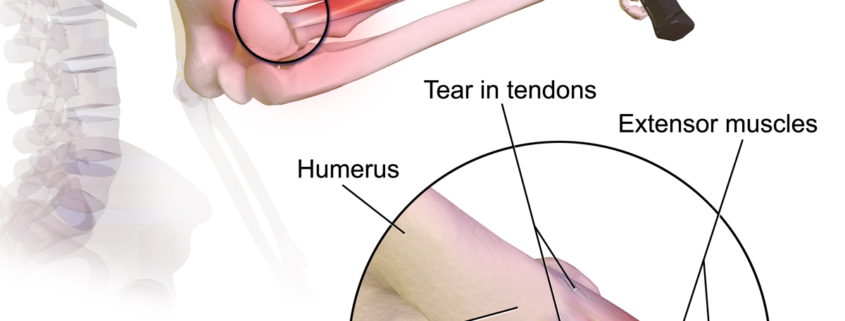Tennis Elbow (Lateral Epicondylitis)

Overview of Tennis Elbow (Lateral Epicondylitis)
Tennis elbow, medically known as Lateral Epicondylitis, is a condition involving tendon degeneration due to excessive use of the forearm muscles. Even though it’s commonly referred to as ‘Tennis Elbow,’ only a small fraction of cases actually result from playing tennis. This condition affects around 1% to 3% of the general population and significantly interferes with the normal functioning of the forearm and the hand.
Types of Tennis Elbow (Lateral Epicondylitis)
This condition mainly presents as one primary type, Lateral Epicondylitis. However, a similar condition called ‘Medial Epicondylitis’ or ‘Golfer’s Elbow’ could develop on the inside of the elbow due to excessive use of wrist flexor muscles.
Causes of Tennis Elbow (Lateral Epicondylitis)
Tennis elbow is usually a result of the forearm muscles and tendons being used excessively or improperly, resulting in micro-tears in the tendons on the outside of the elbow. The most common causes include:
– Repetitive activities: These include certain jobs or sports that involve excessive use of the forearm and wrist.
– Sudden injury: An accident or a sudden, unexpected strain can cause Tennis Elbow.
– Age: Anyone can get Tennis Elbow, but it’s prevalent amongst people between the ages of 30 and 50.
Symptoms of Tennis Elbow (Lateral Epicondylitis)
The most common symptoms associated with Tennis Elbow include:
– Pain or a burning sensation on the outside of the elbow.
– Gradual increase of discomfort around the elbow, particularly when gripping or lifting objects.
– Stiffness and pain when extending the arm.
– Decreased grip strength.
Diagnosis of Tennis Elbow (Lateral Epicondylitis)
Diagnosis of Tennis Elbow usually involves a physical examination by a healthcare provider, who will test your elbow’s range of motion, pain level, and strength. Imaging tests such as X-rays or MRIs may also be used to rule out other conditions with similar symptoms.
Treatment Options for Tennis Elbow (Lateral Epicondylitis)
Treatment options for Tennis Elbow fall into two primary categories: non-surgical and surgical.
– Non-Surgical: includes rest, physical therapy, pain relief medication, and use of a tennis elbow strap.
– Surgical: needed if symptoms persist despite six to 12 months of non-surgical treatment. The surgery involves removing the damaged tissue.
Living With Tennis Elbow (Lateral Epicondylitis)
Though recovery can take several months, there are several things you can do to manage the symptoms:
- Regularly perform exercises recommended by your physical therapist.
– Take frequent breaks from repetitive tasks.
– Ice the elbow after strenuous activity.
– Consider using braces or supports.
When to Seek Help for Tennis Elbow (Lateral Epicondylitis)
It’s crucial to consult a healthcare provider if you experience persistent pain in the elbow that doesn’t improve with rest or over-the-counter pain medication, if the elbow looks deformed, or if you can’t use your elbow normally. Remember, the sooner you seek help, the better you prevent long-term damage.
